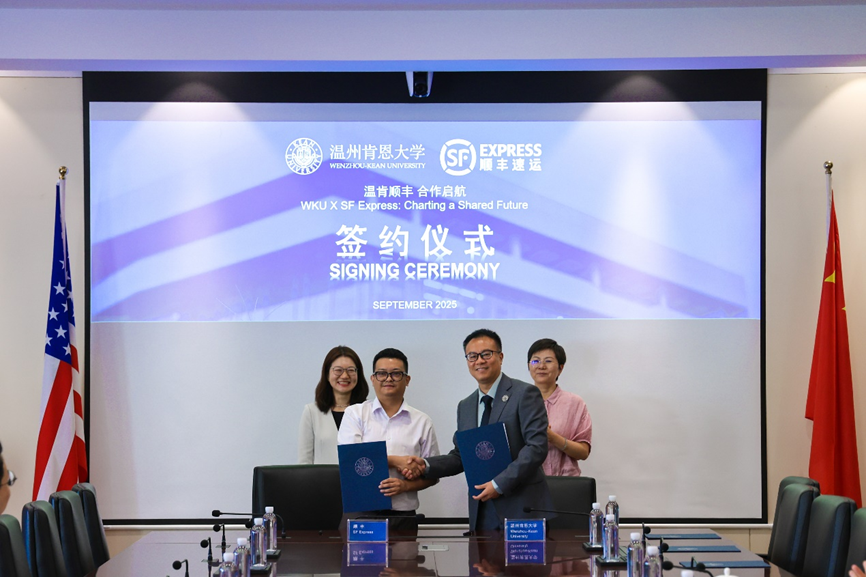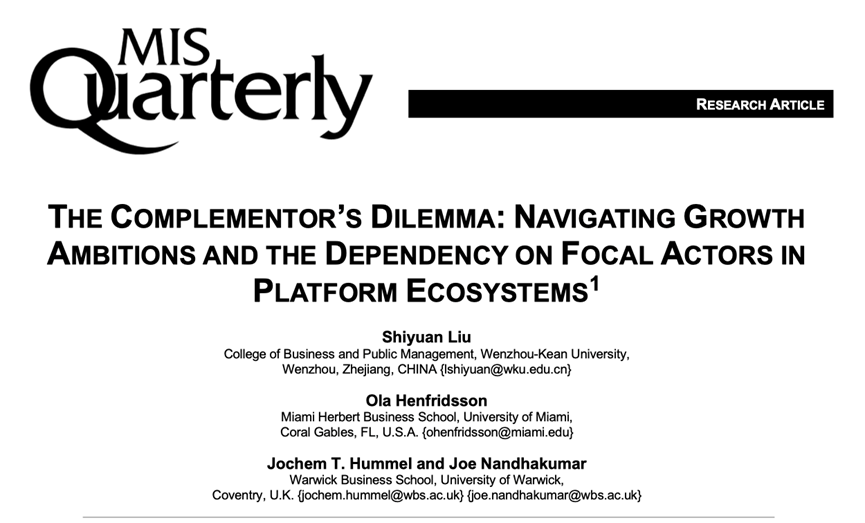Teacher's Say | A Dialogue with Professor Maurizio Vrenna
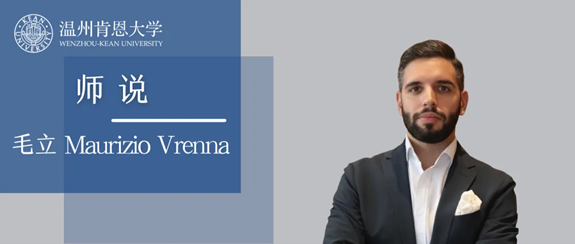
Maurizio Vrenna, hailing from Turin, Italy, is an Assistant Professor at the School of Architecture and Design, Wenzhou-Kean University. He has recently been honored with the title of "Friendship Ambassador" for International Humanities Exchange in Zhejiang Province and is also one of the recipients of this year's Advanced Teaching Awards for Scientific Research at Wenzhou-Kean University.
With a doctoral degree in "Management, Production, and Design" from the Polytechnic University of Turin in Italy, Maurizio Vrenna has also studied at Tsinghua University and Tongji University. Throughout his career, he has been involved in the development of innovative product services, catering to renowned clients such as Ferrari, Ducati, and Juventus. Since August 2020, upon his arrival at Wenzhou-Kean, he has been dedicated to integrating his unique concept of sustainable design into classroom teaching. Recently, he has also participated in the "West Cheon and East Halibut" Art Salon organized by Longxi Art Museum and the "Together for a Better Future: Mountain and Water Wenzhou" Green Development Forum co-hosted by Wenzhou-Kean University.
In this edition of "Teacher's Say," we have invited Professor Maurizio Vrenna to share with us his experiences of mutual shaping with two cities, and to see how he practices his original intentions through education and serves society with his expertise.
01 Cultural inheritance, much like student education, must not be neglected.
"As a designer, whether in my hometown of Turin or in Wenzhou, it is my responsibility, as well as a duty inherent to my role, to reacquaint myself with, explore, and disseminate local traditional cultures."

Maurizio Vrenna introduced his hometown of Turin to the reporters
Before coming to China, Maurizio had noticed that in his hometown of Italy, many excellent cultural aspects were gradually forgotten and fell into decline amid urban development. He cited the example of promoting the works of the Renaissance painter and sculptor Gaudenzio Ferrari. When he visited the small town where this artist resided, he felt that the local culture was unable to integrate into daily life, and there were significant obstacles to passing down local culture. Due to these obstacles, many precious folk cultures were forgotten or only circulated among a small group of insiders. Maurizio stated, "I have always believed that these cultures are worth rediscovering and recreating. As an art scholar, I am also willing to cooperate with local governments to plan exhibitions and design logos for local culture."

Gaudenzio Ferrari's works
Under his efforts, those designed logos have been widely used in various forms of local items and crafts, and more and more people have noticed Gaudenzio Ferrari's works. "I am very happy to see local residents imprinting this logo on coffee coasters, the soles of leather shoes, and even door frames. You can find this logo in every corner of the town," Maurizio added. He also mentioned that local people are willing to use these logos to create brands that embody the unique cultural characteristics of their region. This spontaneous behavior not only promotes the regeneration of culture but also gives local cultural characteristics more vitality and possibilities.

Maurizio Professor's Classroom
Maurizio is enthusiastic about witnessing cultural regeneration and also enjoys acting as a bridge and catalyst for cultural rebirth. This persistence and insightful power have been brought into his classroom since he started teaching at Wenzhou-Kean University.
What sparks will fly when this designer from Turin, Italy, encounters the ancient Zeya papermaking technique? A year ago, Maurizio led a group of students from the School of Design at Wenzhou-Kean University to "China's Millennium Paper Town" - Zeya in Wenzhou, to gain an in-depth understanding of the craftsmanship behind Zeya screen paper production. Their team combined the ancient Zeya papermaking technique with modern aesthetics, creating five exquisite lamps.

The "Zeya Screen Paper Regeneration" project was showcased at the Longxi Museum
When asked what inspired him to promote Zeya Screen Paper culture, Maurizio mentioned that he was deeply fascinated by the intricate and elaborate papermaking process of Zeya Screen Paper. However, due to limitations in dissemination, the application scope of Zeya paper is quite limited. He hoped to leverage the "Zeya Screen Paper Regeneration" project and work with students from WKU to design and create new products, thereby revitalizing the charm of traditional Zeya paper art. Maurizio added, "The five lamps produced this time can not only be appreciated as artworks but also serve as cultural and creative products that can be put into industrial production, thereby driving the development of the local economy."
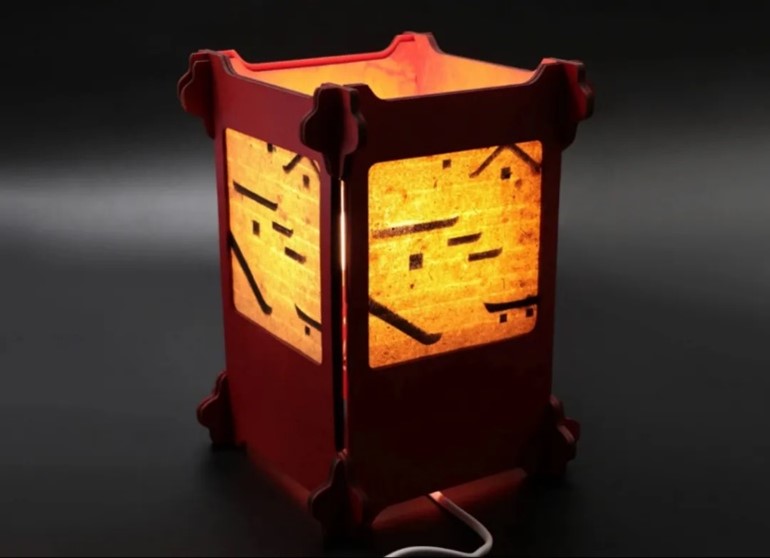

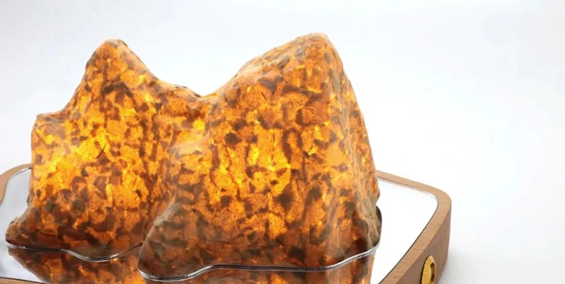
"The Regeneration of Zeya Screen Paper" Exhibition Works
Maurizio believes that culture knows no bounds, whether in his hometown of Italy or in Zeya, Wenzhou. Even in China, he feels a responsibility to protect and preserve these ancient crafts to the best of his ability.
02 Exploring new trends in sustainable development, Maurizio Vrenna is charting a new course in the field of future design.

ALGAE GROWER
Maurizio Vrenna, who specializes in product design, particularly focuses on the direction of sustainable development. For him, sustainability encompasses not only environmental sustainability but also economic, social, and cultural sustainability. "Meeting the needs of the present without compromising the ability of future generations to meet their own needs" is a topic full of opportunities and prospects, and it's a question that every individual in the global community must consider. He firmly believes that research in sustainable development is forward-looking, and its outcomes can provide unlimited possibilities for future employment, scientific research, businesses, and education.

Participating in the roundtable dialogue session of the "Together for Sustainable Development: Mountains, Waters, and the Green Development of Wenzhou" forum
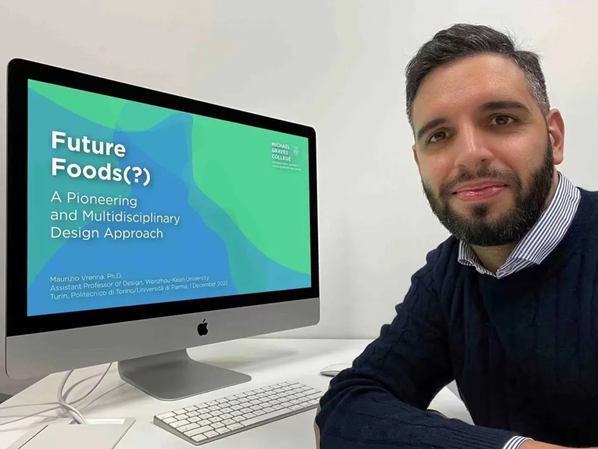
The Future Superfoods" Online Conference
During his doctoral thesis, he proposed the concept of "Exploring Superfoods" by considering microalgae as a potential source of food for the future, beyond the next 40 years. He designed the ALGAE GROWER, a machine capable of producing fresh spirulina algae at home. His design aimed to address global food shortages and domestic supply inadequacies by providing low-cost, high-nutrition spirulina to meet basic living needs and bring convenience to people's lives in the future. Subsequently, when the COVID-19 pandemic erupted in 2020, global economic structures shifted, disrupting normal life and exacerbating food supply issues. In the face of such challenges, Maurizio's microalgae design demonstrated its foresight and practicality even more prominently.
03 In his third year in Wenzhou, he found a sense of belonging.
My hometown Turin and Wenzhou are sister cities. Although the distance between the two cities seems long on the map, their development positioning is very similar." It is this sense of familiarity that allowed Maurizio to quickly integrate into the city of Wenzhou. He actively participated in urban and community activities, such as the "Mayor's Cup" China (Wenzhou) Industrial Design Competition.
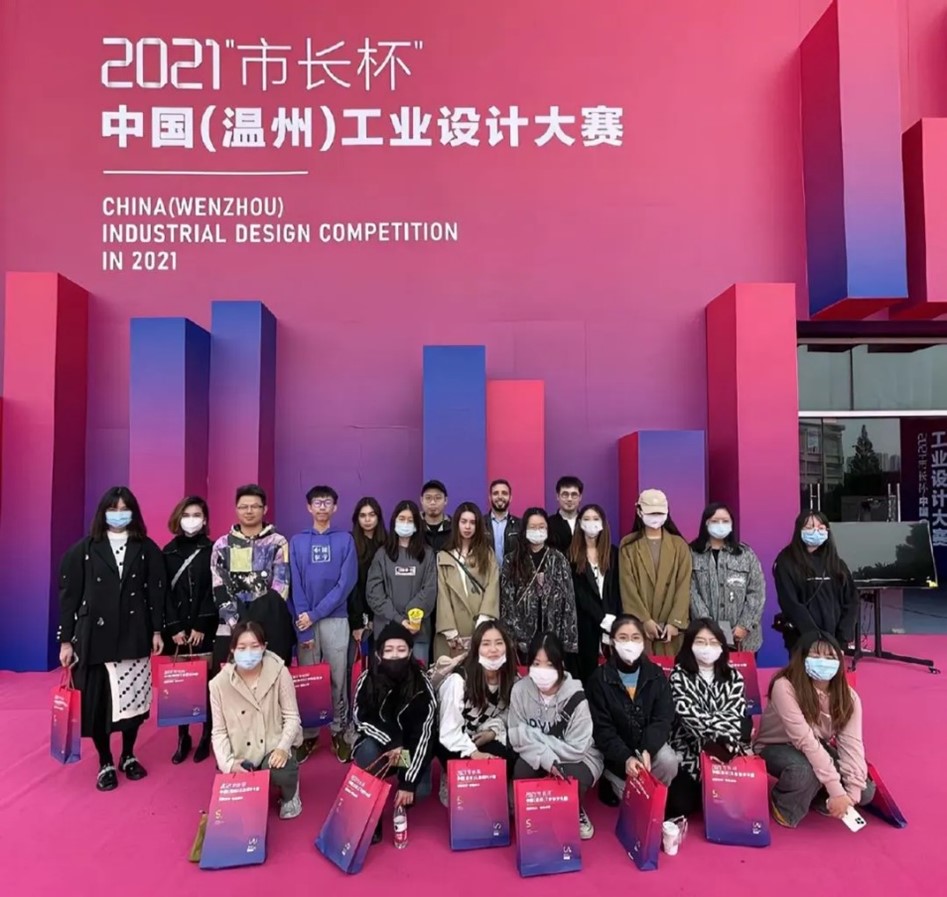
The 2021 "Mayor's Cup" China (Wenzhou) Industrial Design Competition
At the same time, Maurizio also utilizes his expertise to assist the community and government, integrating art into daily life and applying it practically. Furthermore, in his cutting-edge research on diatomaceous earth, he openly shares his research findings and related technologies. During the interview, he explained to us that his ultimate goal in research is not ownership or patent possession but rather advancing technology through his exploration, expanding its application scope, and bringing academic achievements into the market and practical use. "I share my technology, and I hope people can innovate on this technology." Therefore, he doesn't mind disclosing these results; genuine public use is the greatest affirmation and value of his research.
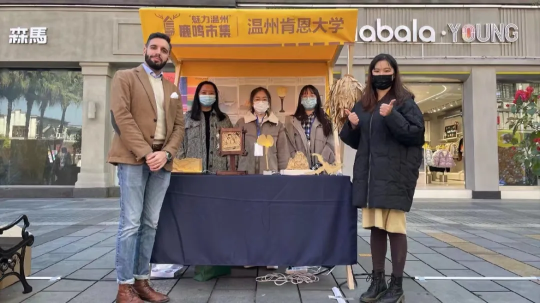
“Charming Wenzhou” Deer Cry Market
Professor Maurizio Vrenna harbors dreams and embraces the era. He not only explores a path of perpetual innovation but also steps into a school where he can grow together. When asked why he didn't choose to work in big cities like Beijing or Shanghai after studying at Tsinghua University and Tongji University, he mentioned that he preferred to choose a city with traditional Chinese flavor. "Beijing and Shanghai are international metropolises with abundant resources and opportunities, but I wanted to come to a city that is not so 'saturated' and grow with it. Wenzhou is like a young bird just flying into the blue sky, and I am a young and ambitious teacher," Professor Vrenna said with a smile. He is willing to grow together with colleagues, departments, and the school, and of course, he also looks forward to moving forward internationally with the city of Wenzhou.
Interview with Dr. Maurizio Vrenna, Industrial Design, Michael Graves College at Wenzhou-Kean University
Dr. Maurizio Vrenna, from Turin, Italy, is an Assistant Professor in Industrial Design at Wenzhou-Kean University who honors this year’s WKU Excellence Award in Research. He holds a Ph.D. in Management, Production and Design from Politecnico di Torino (Italy) and has studied at Tsinghua University and Tongji University, both key universities in China. Throughout his career, Maurizio has been involved in the development of innovative products and services for clients such as Ferrari, Ducati, and Juventus. Since arriving at Wenzhou-Kean University in August 2020, he has been working to integrate his unique understanding of sustainable design into his teaching. Recently, he has participated in “West meets East —The Old Hand at Art VIII” art salon hosted by the Longxi Art Museum and the “Come Together for a Better Future of Wenzhou” Green Development Forum co-organized by WKU with the support of other social associations.
In today’s program, we have invited Dr. Maurizio Vrenna to share his experiences with the mutual shaping of the two cities and how he acts his intention out with education and serves society with his profession.
01 Shouldering the responsibilities of cultural inheritance and students’ education
“No matter in my hometown of Turin or Wenzhou, it is my responsibility and my role as a designer to rediscover, innovate and spread the local traditional culture…”
Before coming to China, Dr. Maurizio Vrenna has found in Italy, his hometown, that many excellent folk cultures were left out of the city’s memory and removed from people’s vision. Maurizio was determined to change this situation and endeavored to keep the local culture alive. One of the successful examples of his hard work is promoting the Italian painter and sculptor Gaudenzio Ferrari’s artworks. Maurizio mentioned that when he visited the small town where the artist lived, the local culture was not integrated into people’s daily lives, and there was great resistance to passing on the local culture. Dr. Vrenna said, "I insisted that the local cultures are worthy of being rediscovered and recreated. As an art scholar, I am willing to work with the local government to make those culture rebirth in a new form." Thus, he planned exhibitions and designed logos on the theme of local characteristics and culture. Through his efforts, those designed logos were widely used in various forms of local crafts, and an increasing number of people noticed Gaudenzio Ferrari's works. “I was so excited to see the logo put on coffee coasters, shoe soles, and even door frames. I may say that you can find this logo all over the town." The local people were willing to use the logo to brand their own local culture, and this spontaneous behavior not only promoted the regeneration of culture but also gave new life and possibilities to the local culture.
Dr. Maurizio Vrenna is glad to see the inheritance of culture, and he is willing to assist and catalyzed cultural inheritance. His considerable insight and persistence in inheriting traditional culture were brought into the classroom after he started teaching at WKU. When a western designer from Turin encountered Eastern ancient Zeta paper, what kind of sparkles would be crashed out?
In 2021, Maurizio led his students from the WKU Design department to visit Zeya—known as the "Chinese Millennium Paper Town" and gained insight into how Zeya paper was made. Combining Zeya's ancient papermaking techniques with modern aesthetics, Dr. Maurizio Vrenna and WKU students jointly made five beautiful lamps. When asked about what inspired him to spread Zeya’s paper, Maurizio said with excitement: "The complicated and delicate papermaking process of Zeya’s paper deeply attracted me!" Restricted by way of transmission, unfortunately, Zeya paper has a very limited application. Therefore, Maurizio hopes to use the "Zeya Paper Reborn Project" to design and create new products with WKU students so as to rediscover the beauty of Zeya's paper art. He also added: "The five lamps not only can be used as artworks for everyone to enjoy but also they can be put into industrial production as cultural characteristic products boosting the local economy."
Whether he was in Italy or in Wenzhou, Maurizio believed that there are no boundaries between cultures. Even though he is in China, he still insists that he has a responsibility to preserve and pass on those talent ancient skills as much as he can.
02 Exploring future design trends in the field of sustainable development
Focusing on the field of Industrial Design, Dr. Maurizio Vrenna is particularly interested in sustainable development. For him, sustainable development involves not only environmental sustainability but also involves economic, social, and cultural sustainability. “Meeting the needs of the present and benefiting future generations” is always a hot topic. It’s a topic full of opportunities and prospects that everyone around the globe must think about. Maurizio is convinced that research on sustainable development is forward-looking, and its results offer infinite possibilities for future employment, research, business, and education.
While preparing for his doctoral dissertation, he proposed the idea of “exploring superfoods”—microalgae as food in 40 years. He also designed ALGAE GROWER, a machine that produces fresh spirulina at home. His original intention was to meet everyone’s basic needs with low-cost, highly nutritious spirulina and to bring convenience to people’s lives in the future against an international backdrop of global foot shortages and insufficient domestic supply. Later in 2020, COVID-19 broke out, and the global economic structure changed. People’s daily life was impacted while problems with food supply were frequent. Under such impact, Maurizio’s micro-algae design has become quite prospective and practical.
03 In his third year in Wenzhou, he found a sense of belonging
“My hometown Turin and Wenzhou are sister cities. Although the distance between the two cities is very long from the map, the development orientation of the two cities is very similar.”
This intimacy makes Maurizio quickly integrate into the city of Wenzhou. He participates in city and community events such as the “Mayor’s Cup” China (Wenzhou) Industrial Design Competition. At the same time, he also used his professional knowledge to assist the community and the government so that art could be integrated into and affect life.
Moreover, he even publicized his “diatom mud’s” research results and related technologies. In the interview, he explained to us that the ultimate goal of his research is not attribution or patent ownership but rather to advance the technology through his exploration. He wants truly expand the application area and bring academic achievements to the market and practical use. “I share my technology, and I hope people can innovate on this technology”, said Maurizio. Therefore, he does not mind making these results public, and the actual use by the public is the most significant recognition and value of his research.
Dr. Maurizio Vrenna keeps the dreams and embraces the times. He has explored a path of innovation and stepped into a school that could grow with him.
When asked why he did not stay in big cities such as Beijing and Shanghai to work after his life as a student, he mentioned that he preferred to choose a city with a traditional Chinese style. “Beijing and Shanghai are international cities with rich resources and opportunities, but I hope to come to a city that is not so ‘saturated’ and grow together with it. WKU is a fledgling that has just taken to the blue sky, just like I am also a young teacher full of longing.” Dr. Maurizio explained. He is willing to grow with his department, college, and school. Admittedly, he also looks forward to marching toward internationalization with this city—Wenzhou.
Text | Liu Yansi, Wang Yanran, Lin Zili
Photos | Provided by Interviewees
Production | Xiang Wenwei
Initial Review | Xiang Wenwei
Final Review | Maurizio Vrenna, Ye Chengxi, Wang Shu
Editing | Media Center

